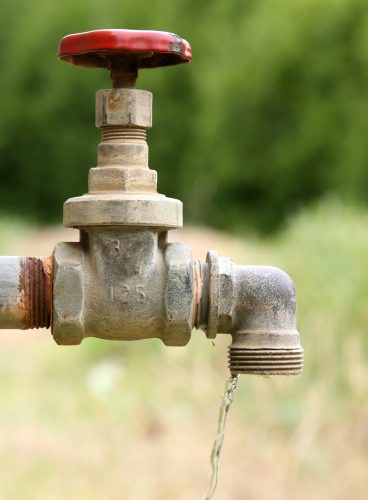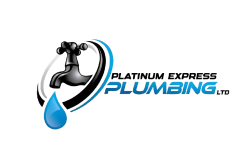Installation of grease traps
Installation of grease traps, commercial-grade water heaters

Grease Trap & Commercial-Grade Water Heater Installation
In commercial environments, equipment like grease traps and commercial-grade water heaters is essential for keeping kitchens and businesses running smoothly. However, these installations require specialized knowledge to ensure they operate effectively and comply with local codes. Proper installation is critical to avoid operational issues and maintain a safe, efficient workspace. This article covers the importance of professional installation for grease traps and commercial-grade water heaters, along with a breakdown of the services involved and frequently asked questions.
Why Professional Installation is Essential
Installing grease traps and commercial-grade water heaters is not a simple task. Both require an understanding of plumbing, safety regulations, and industry-specific installation techniques. Incorrectly installed equipment can result in clogged pipes, inadequate hot water supply, or safety hazards. Professional installers are equipped to handle these tasks with expertise, ensuring the job is done right the first time and in compliance with all local regulations.
Key Installation Services
Grease Trap Installation
Grease traps are a must-have in any commercial kitchen, as they prevent fats, oils, and grease (FOG) from clogging up the plumbing system. A professional grease trap installation includes the following steps:
- Site Assessment: A professional technician will determine the optimal location for the grease trap, generally near the sink or dishwasher where the most FOG is produced. This step helps ensure effective grease capture at the source.
- Sizing & Selection: Choosing the correct size grease trap is critical. A professional can help select the appropriate size based on water usage, flow rate, and local regulations to ensure the system operates efficiently.
- Installation: The grease trap is connected to the sink and wastewater lines, which directs FOG into the trap. Proper installation involves secure connections to prevent leaks and ensure compliance with health and safety codes.
- Testing & Final Checks: After installation, professionals will test the system to confirm that the grease trap is functioning properly and meets local codes.
Commercial-Grade Water Heater Installation
Commercial water heaters are designed to handle high hot water demands, making them ideal for restaurants, hotels, and other high-use facilities. Here’s what professional water heater installation typically involves:
- Hot Water Demand Analysis: A technician will assess your business’s hot water needs, considering factors such as peak demand times, daily usage, and the specific requirements of the space.
- Equipment Selection: Commercial water heaters come in various types, including tankless, storage, and hybrid models. A professional can help choose the right unit for your business to meet both performance and efficiency requirements.
- Installation & Connections: The unit is installed and connected to both the plumbing and power source. Professionals ensure all connections are tight, test for leaks, and confirm the system’s safety features.
- Safety Compliance: Local codes and safety standards govern commercial water heater installations. Hiring a licensed professional ensures the installation meets these requirements, minimizing risks of accidents and penalties.
Benefits of Professional Installation
- Compliance with Codes: Commercial installations must meet specific codes, and failure to comply can result in fines or operational delays. Professionals know these codes and will ensure installations meet all necessary standards.
- Efficient and Timely: Professional installation is faster and reduces the likelihood of mistakes. Technicians come equipped with the right tools and knowledge, enabling efficient and reliable installation services.
- Improved Equipment Longevity: Proper installation contributes to the longevity and efficiency of both grease traps and water heaters, which can reduce the need for costly repairs or replacements.
- Safety and Peace of Mind: Correct installation reduces the chances of leaks, equipment malfunctions, and other potential hazards, providing business owners with peace of mind.
- Energy Efficiency: Professional installation optimizes the operation of water heaters, helping your business save on energy costs over time.
Common Problems with DIY Installations
Opting for a DIY installation may seem cost-effective, but it often leads to common issues that professionals can help avoid:
- Incorrect Sizing: If the grease trap or water heater is too small or too large, it can lead to inefficiency and increased operating costs.
- Leaking Connections: Poorly connected pipes are prone to leaks, which can result in water damage, mold growth, and high repair costs.
- Non-Compliance with Regulations: DIY installations often overlook local codes. Non-compliance can lead to fines or require a complete reinstallation to meet code.
- Reduced Efficiency: Incorrect installation of water heaters can result in lower efficiency, increasing energy costs and reducing the equipment’s lifespan.
FAQs
Yes, grease traps can often be repaired. However, the extent of the damage and the type of grease trap will determine whether repair is feasible. Minor issues like leaks or clogs can usually be addressed, but more severe damage may require replacement.
The frequency of grease trap replacement depends on several factors, including the size of the trap, the volume of grease it handles, and the effectiveness of maintenance. Generally, grease traps should be inspected annually and replaced every 3-5 years.
The life expectancy of a grease trap can vary, but with proper maintenance, it can last for several years. Factors such as the quality of materials, installation, and usage patterns will influence its lifespan.
Here are some steps to try when dealing with a clogged grease trap:
- Manual Cleaning: If the clog is minor, you may be able to remove it manually using a scraper or drain snake.
- Chemical Cleaning: Commercial grease trap cleaners can help dissolve and break down grease and other debris. Follow the manufacturer's instructions carefully.
- Hot Water Flush: Pouring hot water down the drain can help melt grease and loosen clogs.
- Professional Cleaning: For stubborn clogs or regular maintenance, consider hiring a professional plumber to clean the grease trap.
If you're experiencing frequent clogs or other issues with your grease trap, it may be time for a professional inspection or replacement.
